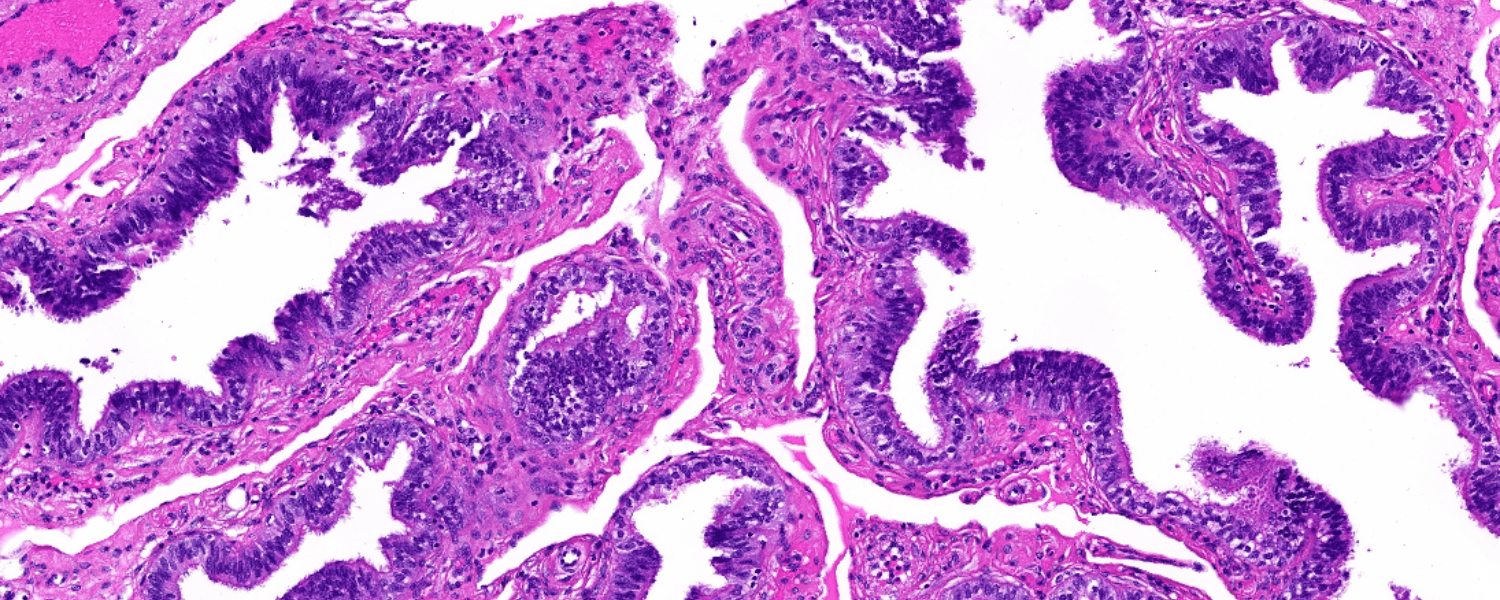New ‘atlas’ may aid search for markers of early-stage ovarian cancer
August 27, 2025

To understand ovarian cancer, you have to go back to where it begins.
In most cases, that means the fallopian tubes. These slender structures, which connect the ovaries to the uterus, give rise to more than 80% of ovarian cancers.
Fallopian tubes undergo a lot of changes throughout life in response to age, hormones, pregnancy, genetics and other factors. Although most of this variation is normal, some of these elements can affect cancer risk. For example, inherited mutations in the BRCA1 and BRCA2 genes greatly increase risk for ovarian and breast cancers.


Earlier this year, the lab of Hui Shen, Ph.D., and collaborators published the most comprehensive analysis to date of normal variation in fallopian tubes. This new “atlas” is a powerful resource that will help scientists compare healthy fallopian tissue to cancerous tissue — a key step toward finding better ways to diagnose the disease earlier.
“Cancer cells and healthy cells differ in many ways. We want to identify those early differences in the fallopian tubes and use this information to develop markers to detect ovarian cancer sooner,” said Ian Beddows, Ph.D., a bioinformatics research scientist in the Shen Lab. “With this data, we now have a much clearer picture of variation in healthy cells. This critical information will help narrow down which changes precede cancer and which are related to other factors such as pregnancy and hormones.”
To create the atlas, the team analyzed gene expression, protein expression and epigenetic alterations in more than 100 fallopian tubes. They identified five categories of major changes that span menstrual cycle, age, menopause status and pregnancy. Each category has distinct molecular and cellular features.
They also found that women with hereditary mutations in the BRCA1 and BRCA2 genes do not have detectable differences in the molecular profiles of their fallopian tubes. This was a surprising discovery, Beddows said, because of the known link between BRCA1 and BRCA2 mutations and higher risk of ovarian and breast cancers.
Learn more about Dr. Shen’s research ➔
“It turns out that a lot of the molecular ‘alterations’ attributed to germline BRCA mutations are just normal variation observed in benign fallopian tubes,” Beddows explained. “This helps us rethink how and when to look for changes preceding cancer in high risk cases and reinforces the importance of accounting for normal variation in our work.”
Beddows and Shen hope their new atlas will lead to identification of cancer markers that will help physicians better detect early-stage ovarian cancer.
“We currently don’t have a good way to catch ovarian cancers in their initial stages,” Shen said. “Defining early ovarian cancer-specific changes would be a game-changer. Our new atlas will help accelerate and support this search.”
Research reported in this publication was supported by the Canary Foundation and the Gray Foundation.
This work was partially supported by the National Cancer Institute of the National Institutes of Health under award no. P50CA228991 (Drapkin); the Department of Defense under award no. W81XWH-22-1-0852 (Drapkin); the Dr. Miriam and Sheldon G. Adelson Medical Research Foundation (Drapkin), the Honorable Tina Brozman Foundation for Ovarian Cancer Research (Drapkin and Marto); the Claneil Foundation (Drapkin), the Gray Foundation (Drapkin and Marto), the Carl H. Goldsmith Ovarian Cancer Translational Research Fund (Drapkin), the Marjorie S. Stanek and Lowell H. Dubrow Ovarian Cancer Research Center Endowed Fund (Drapkin), the Mike and Patti Hennessy Foundation (Drapkin), the Monica K. Young Foundation (Drapkin), and the Basser Center for BRCA (Drapkin).
The content is solely the responsibility of the authors and does not necessarily represent the official views of the National Institutes of Health, the Department of Defense or other funding organizations.
